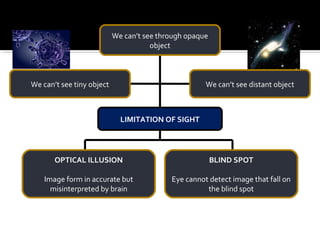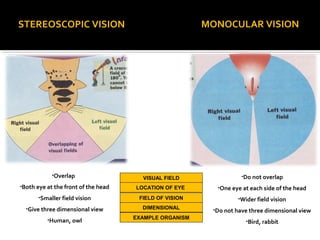MONOCULAR AND STREOSCOPIC
- 2. We canât see through opaque object We canât see tiny object We canât see distant object LIMITATION OF SIGHT OPTICAL ILLUSION BLIND SPOT Image form in accurate but misinterpreted by brain Eye cannot detect image that fall on the blind spot
- 4. What do you see at first an old lady or a young woman?
- 7. MONOCULAR VISION STEREOSCOPIC VISION âĒOverlap VISUAL FIELD âĒDo not overlap âĒBoth eye at the front of the head LOCATION OF EYE âĒOne eye at each side of the head âĒSmaller field vision FIELD OF VISION âĒWider field vision âĒGive three dimensional view DIMENSIONAL âĒDo not have three dimensional view âĒHuman, owl EXAMPLE ORGANISM âĒBird, rabbit







